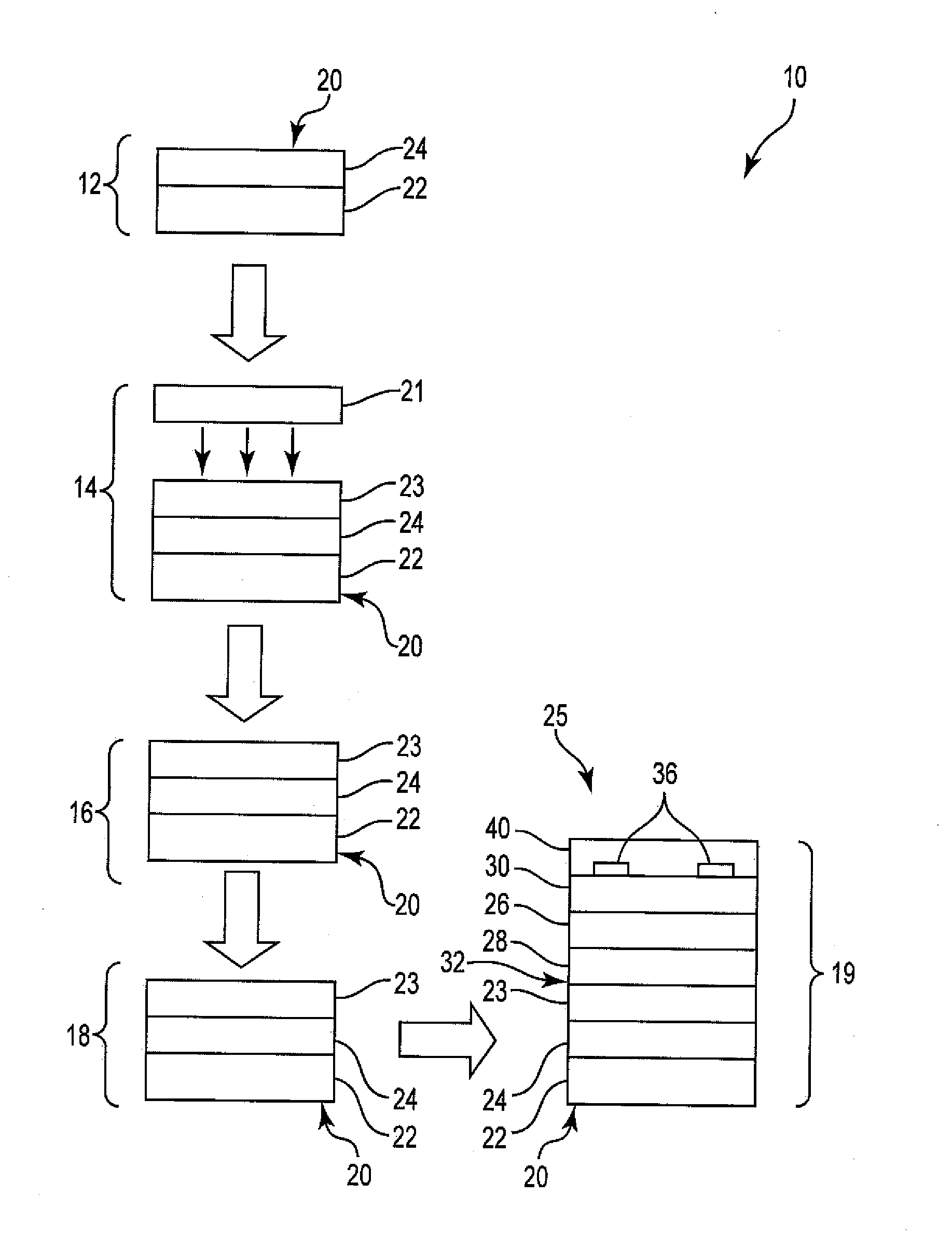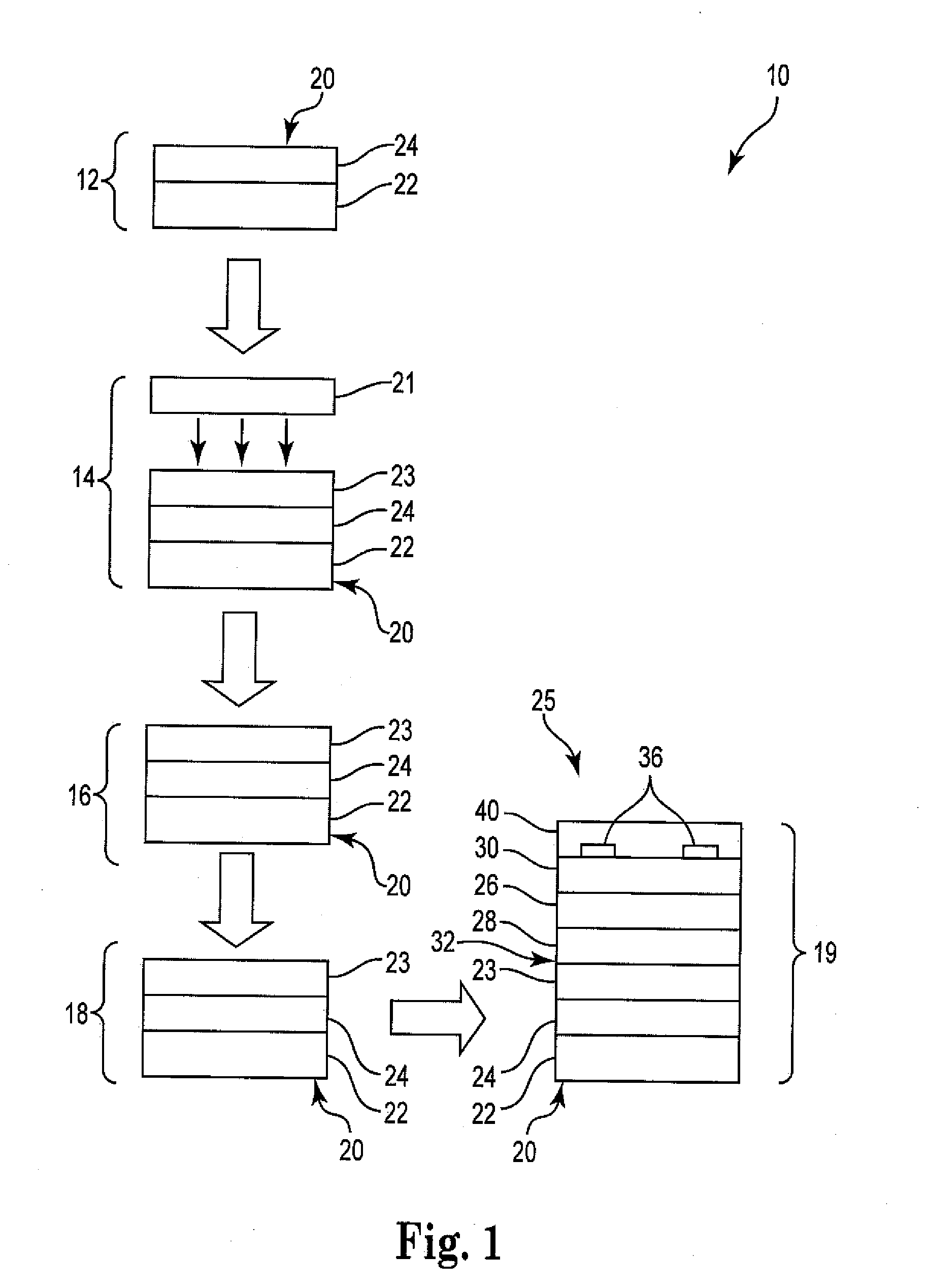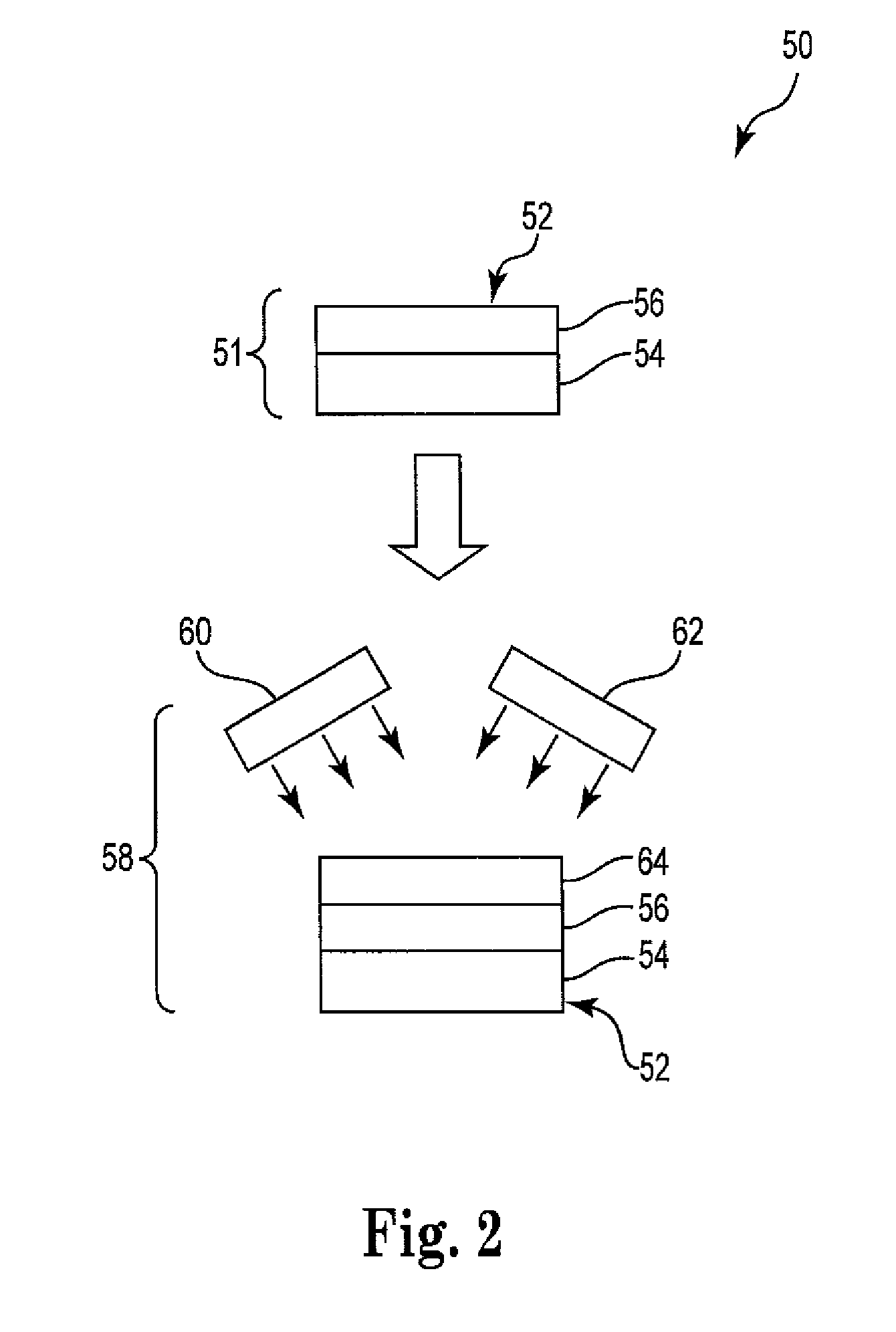Chalcogenide-based materials and improved methods of making such materials
a technology of chalcogenide-based materials and photoabsorbing materials, which is applied in the direction of sustainable manufacturing/processing, camera filters, instruments, etc., can solve the problems of stoichiometry, stoichiometry, and inability to meet the requirements of photoabsorbing compositions with industrially scalable processes, and achieves the reduction of overall void area and size, improve adhesion, and reduce the effect of ga migration
- Summary
- Abstract
- Description
- Claims
- Application Information
AI Technical Summary
Benefits of technology
Problems solved by technology
Method used
Image
Examples
example 1
Preparation of CIGS Film Embodiment of the Present Invention
[0100]A CIGS film precursor is produced with a relatively high but sub stoichiometric level of Se throughout the precursor film. A “CIGS” sputter target (commercially available) containing the atomic ratios of In+Ga / Cu of 1.2, Ga / In of 0.3, and Se / (Cu+In+Ga)=2, 2″ in diameter, is used to sputter the precursor film. The method used is pulsed DC (direct current) sputtering, with a pulse frequency of 330 kHz and an off time of 1.2 vs. The substrate is located 8 cm away from the target. The substrate is a piece of soda-lime glass coated with a 800 nm thick layer of Mo. The substrate was not intentionally heated during sputtering, but the substrate temperature during growth is estimated to be approximately 60° C. throughout the growth of the precursor film. The base pressure of the system is under 5*10−7 Torr; the sputtering pressure is 3.5 mTorr using ultra high purity Argon gas. The target is sputtered at a power of 100 W for ...
example 2
Preparation of CIGS Film Embodiment of the Present Invention
[0103]A CIGS film precursor is prepared with a relatively low, substoichiometric level of Se throughout the film. This film precursor is deposited with both a CIGS alloy target (Cu, In, Ga, and Se included in the target) similar to the one used in Example 1 except that the diameter is 100 mm, and a CIG alloy target (Cu and In and Ga included in the target) similar to the one used for comparative example A. The two targets are sputtered at the same time in a confocal arrangement, both at 100 W for 30 minutes at room temperature. As the CIGS target sputters much more slowly than the CIG target, this results in a bulk film with a relatively low concentration of Se throughout. In this case, the targets were 100 nm in diameter, and the substrate is a 5×5″ piece of stainless steel coated with Nb (150 nm) and Mo (350 nm) prior to the precursor deposition. The Ar pressure during sputtering was 5 mTorr. All other conditions are simi...
example 3
Preparation of CIGS Film Embodiment of the Present Invention
[0106]A precursor film is prepared that has a multilayer format to demonstrate the back-side layer benefit of an Se-containing precursor. The precursor is deposited by first using a CIGS target, (the same CIGS target used for example 2), to deposit a layer for 28% of the total deposition time, with the reminder of the film deposited from a metallic CIG alloy target,(the same CIG target used for example 2). The total time of deposition is 46 minutes, and the power on both targets is 100 W. These depositions are performed at room temperature, using a gas pressure of 5 mTorr. The two sputter sources are arranged in a confocal geometry, and similar pulsed DC sputtering conditions and target-to-substrate conditions are used as Examples 1 and 2. The substrate is also similar to the substrate of example 2, being a 5×5″ piece of stainless steel, coated with Nb (150 nm) and Mo (350 nm) prior to the precursor deposition. The precurso...
PUM
| Property | Measurement | Unit |
|---|---|---|
| Fraction | aaaaa | aaaaa |
| Fraction | aaaaa | aaaaa |
| Thickness | aaaaa | aaaaa |
Abstract
Description
Claims
Application Information
 Login to View More
Login to View More - R&D
- Intellectual Property
- Life Sciences
- Materials
- Tech Scout
- Unparalleled Data Quality
- Higher Quality Content
- 60% Fewer Hallucinations
Browse by: Latest US Patents, China's latest patents, Technical Efficacy Thesaurus, Application Domain, Technology Topic, Popular Technical Reports.
© 2025 PatSnap. All rights reserved.Legal|Privacy policy|Modern Slavery Act Transparency Statement|Sitemap|About US| Contact US: help@patsnap.com



